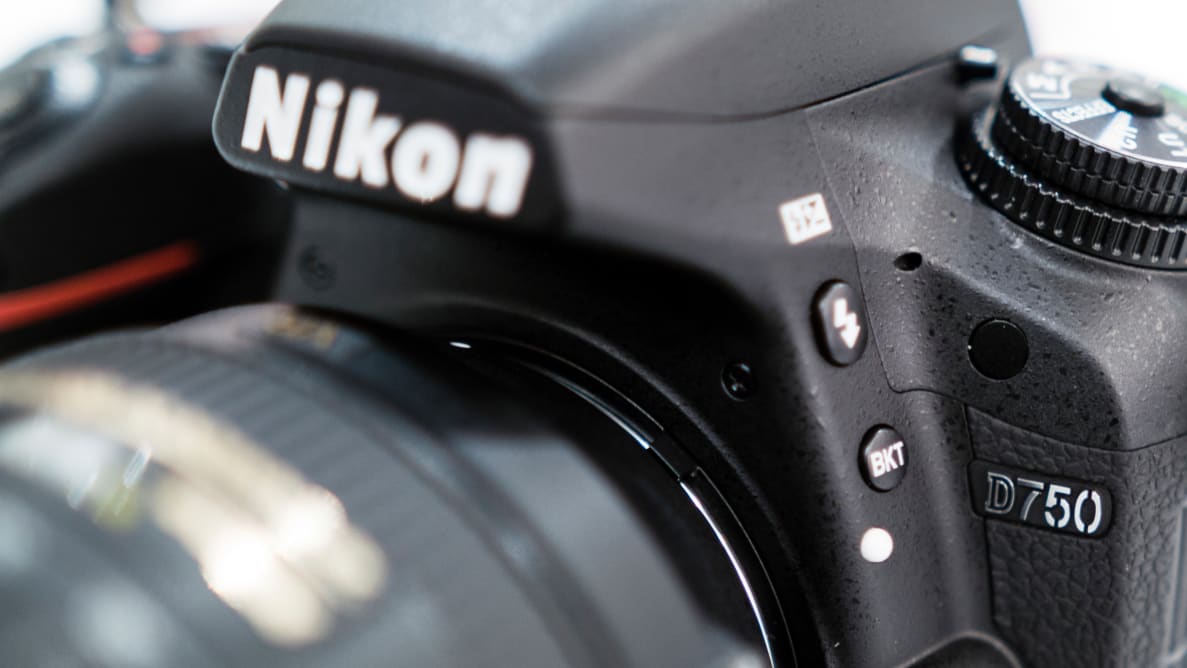Pros
Cons
No one else comes close. Sony has released four full-frame DSLRs–the A7, A7R, A7S, and A99. Canon, meanwhile has released three: the 5D Mark III, the 6D, and the flagship 1D X. If practice really does make perfect, Nikon has to be closer to full-frame perfection than anyone else.
Earlier this month, Nikon decided it was time to announce its third full-frame body in eight months, outing the Nikon D750 (MSRP $2,299). While yet another full-frame camera wasn't exactly a surprise, it's interesting that it's a completely new model, rather than a replacement for an existing camera. The D750 offers better performance and features than the D610 while coming remarkably close to the performance of the D810 and actually bettering it in some categories.
We were able to handle and shoot with the D750 at Photokina 2014 in Cologne, Germany. Check out the video below and read on for all the details about the new camera from Nikon.
{{brightcove '3792378317001'}}
Design & Usability
Don't let the small package fool you.
The first thing you'll notice about the Nikon D750 is how small it is. Compared to the D610, it's about the same height, but 4mm narrower. That's a real achievement, since the D610 was already a very small full-frame DSLR. To provide a bit more context, Canon's new 7D Mark II—a DSLR with a smaller APS-C sensor—is bigger and more than 20% heavier than the D750.
That might not sound like a big deal—all DSLRs are big and heavy compared to other cameras, right? But it's absolutely noticeable in your hands. The D750 is simply slimmer in almost every design element, from the pop-up flash to the secondary LCD. Even though Nikon added a few features—a tilt screen and more leather for better grip on the sides—the new camera is 10 grams lighter than the D610. How? Well, it's the first DSLR built with a carbon fiber composite monocoque structure.
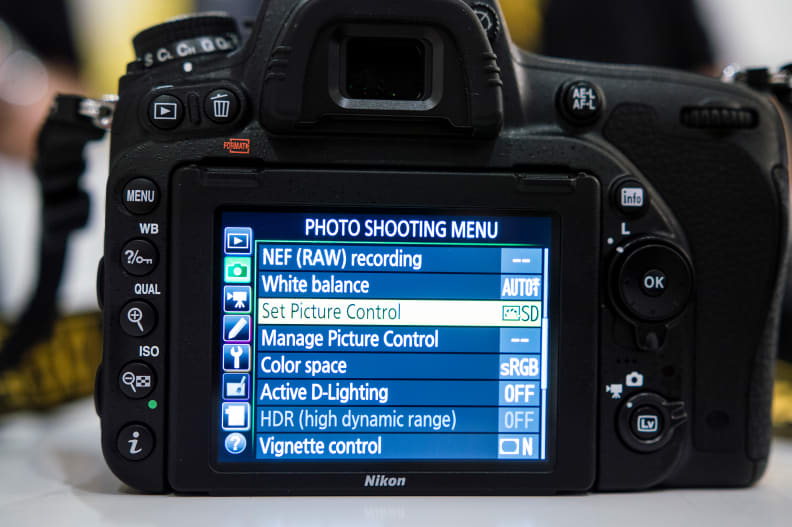
The menu is standard Nikon with multiple submenus to traverse.
That's the same kind of material used in fighter jets and F1 cars. But despite the cutting-edge, weight-saving tech, the build quality doesn't feel like it's taken a hit. The D750 still has the reassuring solidity that a pro-level DSLR demands. It also has full weather sealing, which should give users the confidence to shoot in all conditions.
If you're already a Nikon DSLR user, you won't notice too much that's different about the D750's handling. Buttons are more or less in the same place they've been for the past couple generations, and they do more or less the same things. Nikon doesn't change its design too often, so it isn't surprising that the D750 operates like a mashup of the D610 and D810–just smaller.
It does favor the D610 more than the D810 in terms of button layout. Ergonomically, it's just as easy to use as other Nikon DSLRs—and in some cases, just as confusing. A few controls require you to use both hands at once—usually holding down a button while spinning a dial, which can trip you up if you're not looking for it.
(Coming from a D3, it took me a while to figure out how to switch from Closest Subject AF to Single Area. Turns out you have to hold down the button on the AF/MF selector and turn the rear dial to change AF modes.)
The grip has been resculpted to be a bit deeper where your fingertips meet the body, but it's also got less of a notch where your middle finger rests beneath the shutter button. The change provides a bit of added control and shooting flexibility, but it's far from a game-changer.
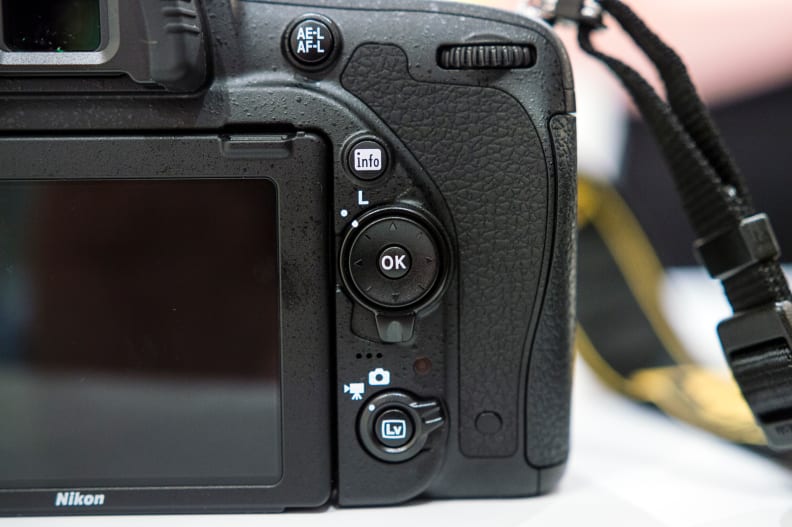
Live mode, directional pad, and other important controls are to the right of the LCD.
Shooting with the D750 and Nikon's new Nikkor 20mm f/1.8 on the show floor, I found it to be an incredibly light and maneuverable package. Image quality was tough to judge based solely on playback (Nikon didn't let us keep any sample shots), but it certainly seemed to be on par with neighboring models in Nikon's lineup. We'll have more details on its ultimate IQ when we get a D750 into our labs.
Features
Flexible screen, flexible sharing
The D750 seems designed to finally bring all the conveniences of modern system cameras to a full-frame Nikon model. In particular, its tilt screen and built-in WiFi are firsts for a Nikon full-frame. Sony beat Nikon to the punch in both cases, and Canon's 6D has WiFi, but this is real progress for Nikon.
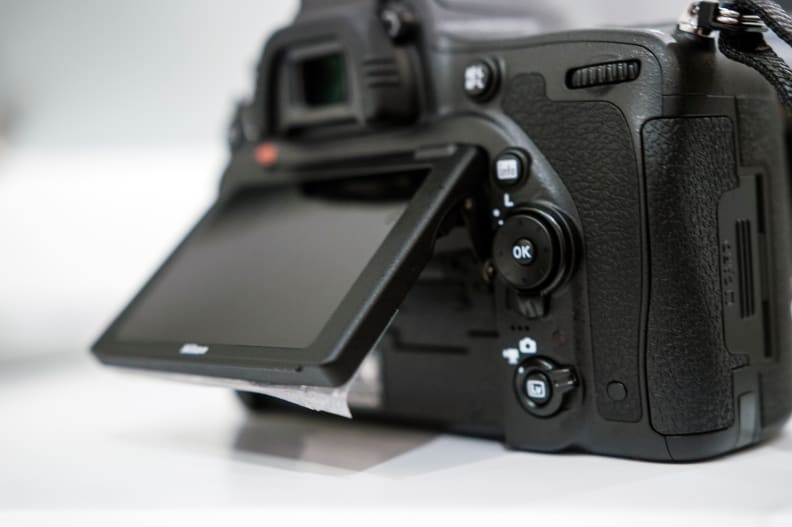
The tilt-screen gives great range of motion to get those awkward angles.
The tilt screen is probably the camera's biggest usability improvement. It's not as flexible as the one on Nikon's APS-C D5300, for instance, but it can tilt up 90 degrees or down 75 degrees, which should be a big help in tight quarters. It'll be a particularly huge boost for videographers. The screen itself is the same as the D810's in both size and quality–3.2 inches and 1,229k dots.
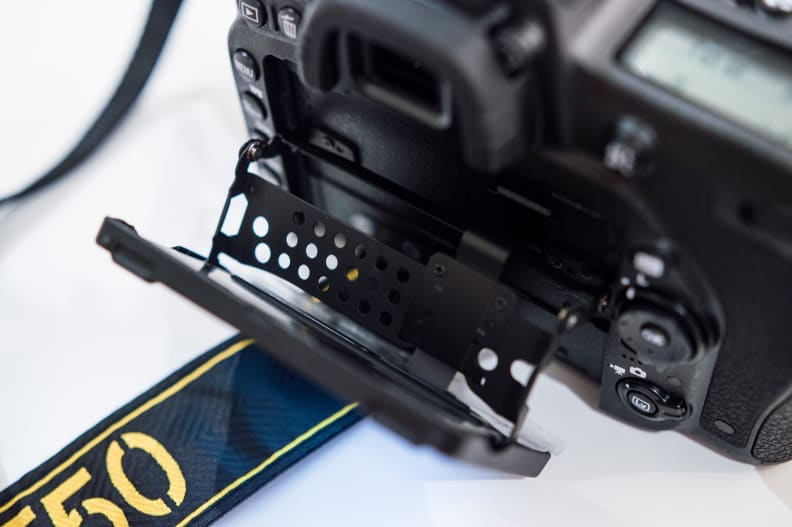
The screen tilts on a metal mount that is very sturdy.
Inside, the D750 sports a 24.3-megapixel FX sensor that probably has a lot in common with the D610's chip. However, it's backed up by the D810's more powerful Expeed 4 processor. The combination of moderate resolution and raw processing power means you get more speed when shooting bursts. The D750 manages 6.5fps, outdoing both the D610 (6fps) and the D810 (5fps). The processing power is also likely what gives the D750 a wider base sensitivity range of ISO 100-12800, with the option to expand to ISO 51200.
The D750 receives an upgraded version of the 51-point Advanced Multi-CAM 3500FX autofocus system—the same powerful array used by the D810 and flagship pro D4S. Nikon claims it can work in lighting conditions as dim as -3EV, which is seriously impressive if accurate. Also onboard is the D4S's world-class metering system, which should help ensure perfect exposure in all environments.
For videographers, the D750 can shoot in Full HD at 60 fps with h.264 encoding. The combination of high-quality HD video and such a small full-frame body should make the D750 a great choice for videographers looking for an "on-the-go" camera. There are connections for a microphone, headphones, and HDMI output, as well.

The D750 has remote, headset, microphone, USB, and HDMI connections.
The D750's built-in WiFi works pretty well. The camera creates its own hotspot, which you connect to with your phone or tablet. From there, you can use your device for live view, tap to shoot, browse the memory card, and download shots. Beware of the fact that the WiFi radio leeches off the D750's battery, though. Using it too much could seriously diminish the number of shots you can eke out of a charge.
Speaking of the battery, the D750 is said to get 1,230 shots on a charge, up from 900 on the D610 despite using the same EN-EL15 battery pack. Either the Expeed 4 processor is a marvel of efficiency or Nikon's whipped up some black magic here.
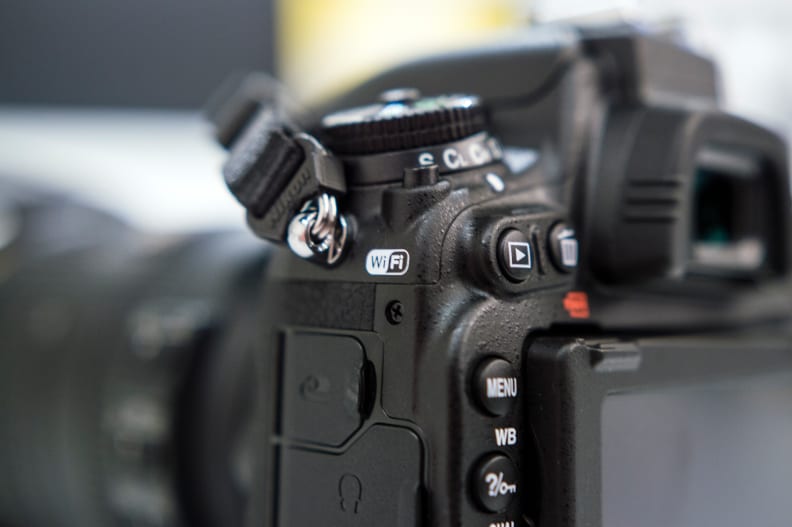
Built in Wi-Fi makes the D750 compatible with the Nikon remote app.
If you don't want to use WiFi to transfer your photos, the D750 is equipped with a new USB 3.0 port that can deliver data at lightning-fast speeds—assuming, of course, that your PC has its own USB 3.0 input. And there's still the option to plug in Nikon's UT-1 Communication Unit for an ethernet connection, including FTP transfer.
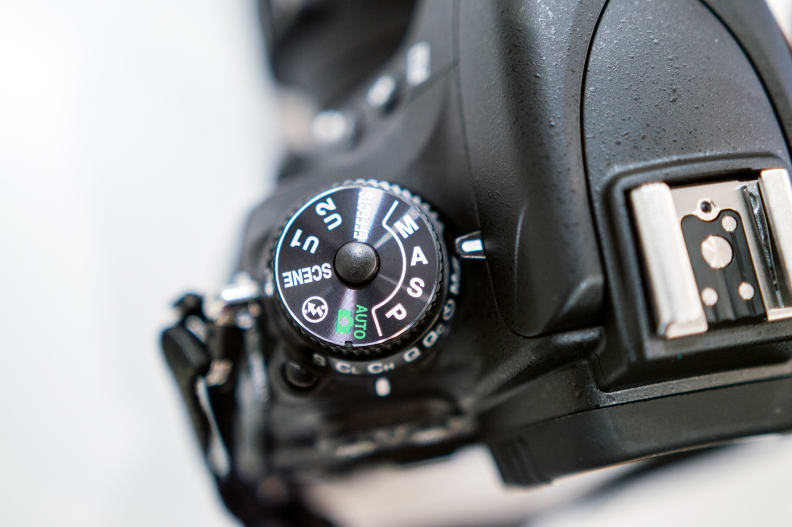
You have the option of all standard modes with the addition of a scene mode and two custom modes.
Despite its semi-pro ambitions and serious technical pedigree, the D750 does include an array of special effects modes like night vision, color sketch, miniature effect, and selective color. Some people might dock the camera some "pro points" for having WiFi and scene modes, but we think if you can squeeze them in and still get the pro results, why not?
Conclusion
For many Nikon shooters, the D750 could be just right.
With yet another full-frame line under its belt, Nikon is clearly committed to bringing the sensor technology to all varieties of photo enthusiasts. At this point, it's offering four distinct tiers of full-frame bodies, plus the oddball Nikon Df.
We spoke to several members of Nikon's DSLR design team at Photokina and asked point-blank if the company felt there were any more gaps left to be filled in its full-frame lineup. They chuckled and replied that at this time, they felt they'd covered the spectrum. We'd have to agree.
The D750 lands right in between the serious amateur and professional categories, making it a candidate for a working pro's second body or a step-up option for an advanced amateur who can't quite afford a flagship.
{{ photo_gallery name="Design" }}
Some photo purists might scoff at additions like WiFi, 1080/60p video, and tilt screens, but these are things that today's working pros can absolutely take advantage of. Until now, they've been features Nikon shooters had to get from a lower-end body, sacrificing performance to do so.
Overall, the D750 bridges the gap between the D810 and D610, offering the best of both worlds. It's a chameleon of a camera that's poised to fit into the bags of amateurs and pros alike. We'll have the full review up as soon as we can get a D750 into our labs. In the meantime, stay tuned for continued coverage from Photokina 2014.
Meet the tester
As a photojournalist, Jackson has had stints working with bands, the military, and professional baseball teams before landing with Reviewed. Outside of Reviewed, he can be found looking for the next game to relieve his "Gamer ADD" or growing his beard.
Checking our work.
Our team is here to help you buy the best stuff and love what you own. Our writers, editors, and experts obsess over the products we cover to make sure you're confident and satisfied. Have a different opinion about something we recommend? Email us and we'll compare notes.
Shoot us an email
